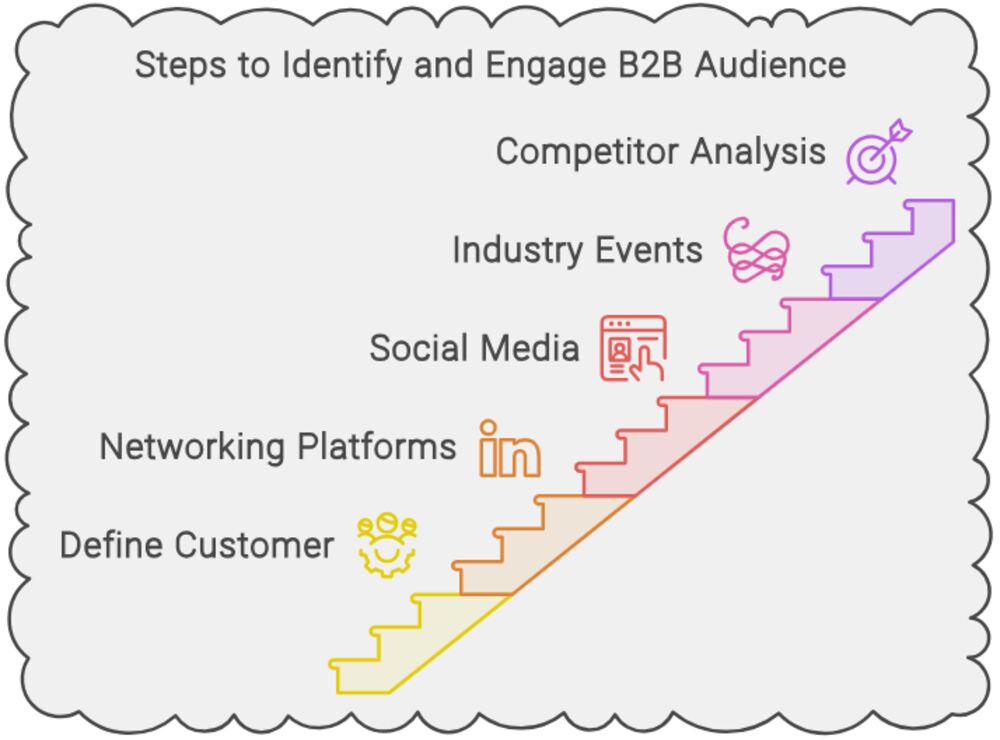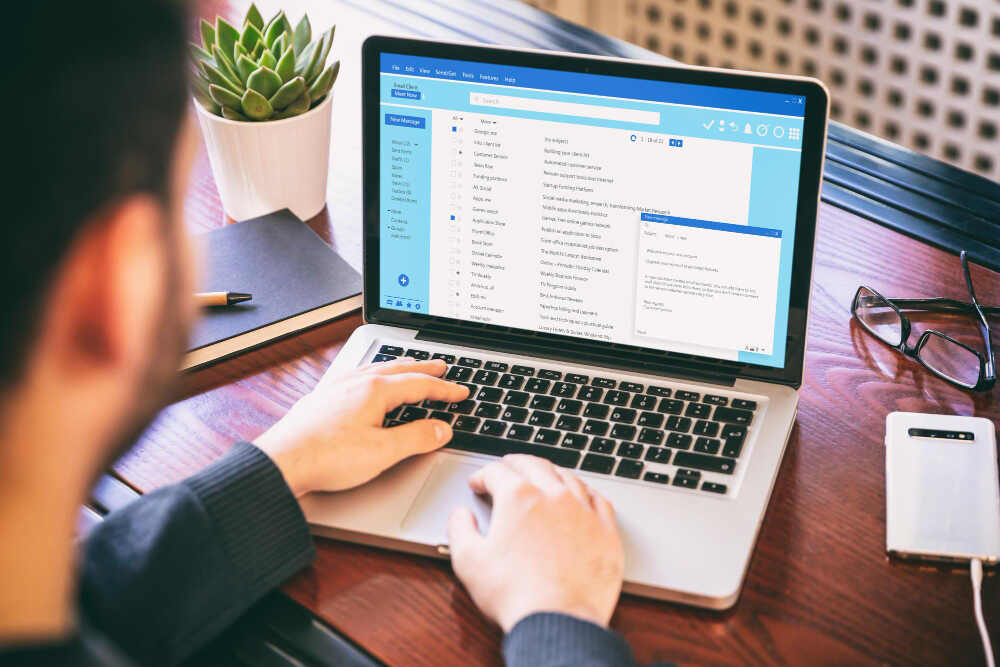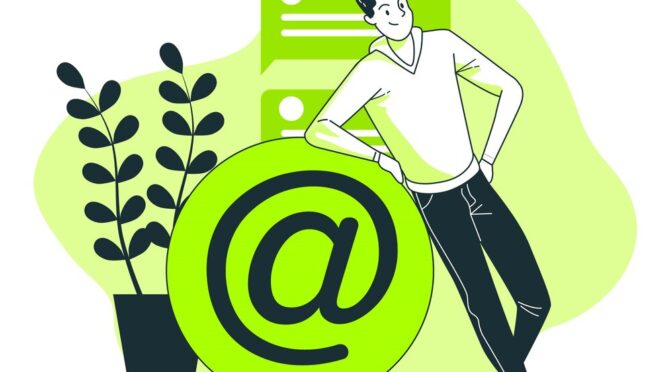Email marketing remains a powerful tool for businesses to effectively communicate with their target audience. Building a targeted B2B email list from scratch is crucial to achieving successful email marketing campaigns.
By having a well-defined and segmented email list, you can ensure that your messages reach the right people at the right time, leading to higher engagement, increased sales, and a greater return on investment (ROI).
To begin this journey of effective B2B email marketing, it is essential to understand the concept of segmentation. Instead of broadcasting generic messages to everyone on your contact list, segmentation allows you to divide your audience into distinct groups based on factors such as industry, job title, company size, or geographic location.
This enables you to tailor your messages specifically to each segment’s needs and interests. By delivering personalized content that provides value to your recipients, you are more likely to capture their attention and foster stronger relationships.
Email marketing software is vital in managing subscriber lists, creating engaging campaigns, automating workflows, measuring performance metrics, and ensuring compliance with email marketing regulations.
The importance of having a targeted B2B email list
Having a targeted email list cannot be overstated. A targeted B2B email list is a curated collection of email addresses belonging to individuals and organizations who are genuinely interested in your products or services.

This list serves as a valuable asset for businesses, allowing them to establish direct communication channels with potential clients and nurture relationships that can lead to increased sales and revenue.
By focusing your efforts on reaching out to individuals who have shown interest in your industry or have a higher likelihood of converting into customers, you can maximize the impact of your email marketing campaigns. Rather than sending mass emails to a generic audience, targeting specific niches enables you to tailor your message, making it more relevant and compelling.
Moreover, having a targeted B2B email list allows for effective segmentation and personalization. With modern email marketing software and tools for effective email list management, businesses can segment their lists based on various criteria.
This segmentation provides opportunities for creating highly customized messages that resonate with different subsets of your audience. By delivering personalized content through segmented campaigns, you can significantly enhance customer engagement and brand loyalty while driving conversion rates higher.
Research shows that personalized emails generate higher open rates and click-through rates compared to generic mass emails. It also allows for effective segmentation and personalization strategies that drive customer engagement and ultimately boost conversions.

The steps involved in building a targeted B2B email list from scratch
Building a targeted B2B email list from scratch requires a systematic approach that incorporates various steps. By following these steps, you can ensure that your email list comprises high-quality leads genuinely interested in your products or services.
The essential steps involved in building a targeted B2B email list: inactive or non-responsive subscribers.
Step 1: Define your target audience
In building a targeted B2B email list, one of the fundamental steps is to define your target audience. Defining your target audience involves identifying the specific group of businesses or professionals who are most likely to be interested in your products, services, or industry-related content. To begin with, it is essential to conduct thorough market research and analysis.
This entails examining market trends, competitor strategies, and customer behavior within your industry. By utilizing customer relationship management (CRM) tools or conducting surveys and interviews with existing customers, you can gain valuable insights into their preferences, pain points, and motivations.
It is important to consider using lead magnets strategically during the process of defining your target audience. Lead magnets are valuable resources or incentives offered in exchange for contact information like email addresses.
By offering lead magnets tailored specifically to different segments within your target audience criteria – such as beginner guides for newcomers or advanced strategies for experienced professionals – you can attract highly qualified leads who are genuinely interested in what you have to offer.
Step 2: Find your target audience
To effectively reach the right audience, you must use various lead generation techniques and conduct thorough market research. Here are some strategies to help you find your target audience:
Define the characteristics of your ideal customer
Before searching for your target audience, it’s essential to have a clear understanding of who you want to reach. Specific pain points your product or service can address. This will help you create a buyer persona that guides your search for the right prospects.
Use professional networking platforms
Platforms like LinkedIn provide valuable resources for B2B lead generation. Utilize advanced search filters on LinkedIn to identify potential leads based on criteria like industry, job title, and company size. Joining relevant industry groups on LinkedIn allows you to engage with professionals who may be interested in what you offer.
Leverage social media platforms
Identify the social media platforms that align with your business objectives and explore groups or communities where professionals from your target industries gather.

Attend industry events and conferences
Participating in trade shows, conferences, or webinars related to your niche provides excellent opportunities for finding potential customers within your target market segment. These events allow you to connect with industry experts, interact with potential leads face-to-face (or virtually), and gain insights into their pain points or challenges.
Analyze competitor targeting
Analyzing how competitors attract their customers can provide valuable insights for finding yours as well. Identify who their clients are by studying their website content, social media presence, email marketing campaigns, and any other channels they use for lead generation.
By employing these strategies in conjunction with email marketing best practices, you can identify and engage with your ideal B2B audience.
Step 3: Collect email addresses
In the process of building a targeted B2B email list from scratch, the step of collecting email addresses plays a vital role in creating a strong foundation for your email marketing efforts. Effective collection methods and strategies are essential to ensure you gather high-quality contacts who are genuinely interested in your products or services. Here’s a closer look at how you can collect email addresses for your targeted B2B email list:
Utilize lead generation techniques
Implementing lead generation strategies can help you capture potential customers’ contact information. Lead magnets, such as e-books, whitepapers, webinars, or exclusive industry reports, serve as incentives for prospects to provide their email addresses. By offering valuable content that aligns with their interests and pain points, you can encourage potential customers to willingly share their details.
Leverage social media platforms
Social media marketing presents an excellent opportunity to expand your reach and generate leads. Promote gated content on platforms like LinkedIn or Twitter where professionals converge within your target market. Direct users to landing pages where they can sign up using their email addresses in exchange for valuable resources or industry insights.
Optimize website conversion points
Your website is an invaluable tool for collecting email addresses from prospective B2B clients. Place prominent opt-in forms on strategic pages such as the homepage, blog posts, resource downloads, and contact pages. Ensure that these forms are well-designed and provide clear value propositions to entice visitors into sharing their information willingly.
Attend industry events
Participating in relevant trade shows or conferences allows you to engage with industry professionals face-to-face while collecting valuable information for your targeted B2B email list.
Set up booths or have representatives who can offer exclusive access to resources by capturing attendees’ emails through interactive experiences like contests or giveaways. Remember that when collecting email addresses, it is crucial to adhere to best practices and maintain compliance with applicable regulations such as GDPR or CAN-SPAM.
Obtaining explicit permission, providing clear opt-in options, and offering easy opt-out methods are essential to building a solid foundation of engaged subscribers.

Step 4: Clean your email list
A clean and well-maintained email list is essential for successful B2B email marketing campaigns, as it ensures that your messages reach the intended recipients and helps maximize your return on investment (ROI).
Neglecting to clean your list can lead to poor deliverability rates, lower engagement, and potential damage to your sender’s reputation. The first aspect of cleaning your email list involves removing invalid or bounced email addresses.
These are addresses that no longer exist or have become undeliverable due to various reasons such as typos, changes in jobs or roles, or inactive accounts. Keeping these addresses in your database not only wastes resources but also increases the likelihood of triggering spam filters and harming the overall performance of your campaigns.
By regularly identifying and removing these invalid addresses using reliable email list management tools or services, you ensure that your messages are reaching actual individuals who are genuinely interested in what you have to offer. It is imperative to address inactive subscribers within your email list as well.
These subscribers might have initially shown interest by signing up but have not engaged with any of your emails for an extended period. While they may still be potential prospects worth nurturing back into the sales funnel or re-engaging through targeted B2B email marketing efforts, keeping them in the active segment could hamper the overall engagement rate of your campaigns.
To re-engage these subscribers effectively, consider implementing a re-engagement campaign using personalized emails tailored specifically towards them. This approach may include offering exclusive content or promotions as lead magnets to entice their interest once again.
By actively managing and segmenting these inactive subscribers from those who remain engaged, you can focus on nurturing leads with a higher potential for conversion while improving overall deliverability rates. Cleaning your B2B email list is an essential step toward maintaining a high-quality, targeted database.
By removing invalid email addresses and addressing inactive subscribers, you can improve your deliverability rates, and engagement levels, and ultimately increase the effectiveness of your B2B email marketing campaigns.
Step 5: Segment your email list
Segmenting your email list is a crucial step in maximizing the effectiveness of your B2B email marketing campaigns. By dividing your targeted B2B email list into specific segments based on various criteria, you can tailor your messages to meet the unique needs and interests of different groups within your audience.
This level of personalization not only enhances engagement but also increases the likelihood of conversions and boosts overall ROI. One key criterion for segmentation is demographic information. This includes factors such as industry, company size, job title, and geographic location.
By segmenting based on these attributes, you can create targeted email content that resonates with specific industries or job roles. For example, if you are offering a software solution tailored for small businesses, you may want to send a separate email to CEOs or business owners in that segment highlighting the benefits and cost savings specifically relevant to their company size.
Another important way to segment your email list is through behavioral data. This refers to how contacts have interacted with your previous emails or website.
By analyzing data from customer relationship management (CRM) systems or email marketing software, you can identify patterns such as purchase history or content consumption habits and create segments accordingly. For instance, if a recipient has previously purchased one of your products or clicked on a particular type of content multiple times, you can send them targeted emails related to those interests.
This not only boosts engagement but also helps nurture leads further down the sales funnel. Segmentation allows you to deliver highly personalized messages that resonate with different subsets of your audience.
By leveraging demographic information and behavioral data from customer interactions stored in CRM systems or email marketing software, you can ensure that each segment receives content that aligns with their specific needs and preferences.
Implementing effective segmentation strategies will help increase open rates, click-through rates, and conversions, and ultimately improve the overall success of your B2B email marketing campaigns while keeping compliance with email marketing best practices in mind.
Conclusion
Building and maintaining a targeted B2B email list is a crucial aspect of successful email marketing campaigns. By following the step-by-step guide outlined in this article, you can ensure that your email list is filled with high-quality leads who are genuinely interested in your products or services. One important aspect of email list management is segmentation.
Segmenting your email list allows you to tailor your messages to specific groups of subscribers based on their interests, demographics, or behavior. Utilizing customer relationship management (CRM) software can greatly assist in this process by providing valuable insights into consumer behavior and preferences.
Familiarize yourself with the laws governing email marketing, such as the CAN-SPAM Act in the United States, to avoid penalties and maintain a positive reputation. Regularly cleaning your email list is essential for maintaining its quality. Remove inactive or unsubscribed contacts to ensure that your messages reach those who are genuinely interested in receiving them.
Integrating automation into your B2B email marketing strategy can significantly enhance efficiency and productivity. Automation tools allow you to streamline processes like lead generation and nurturing, making it easier to manage large volumes of contacts while personalizing interactions at scale.
Tips for maintaining your B2B email list
Maintaining a B2B email list is crucial for the success of your email marketing campaigns and lead generation efforts. Without proper maintenance, your email list can become outdated, filled with inactive or unengaged subscribers, and ultimately harm your deliverability rates and ROI.

To ensure the ongoing effectiveness of your targeted B2B email list, consider implementing the following tips:
Regularly Cleanse and Update Your Email List
Keeping your email list clean is essential to maintaining a high deliverability rate. Periodically remove invalid or bounced email addresses that can negatively impact your sender’s reputation. Use an email list cleaning service or software to identify and eliminate any spam traps, role-based emails (e.g., info@company.com), or inactive subscribers.
Implement Segmentation Strategies
Segmentation plays a vital role in effective B2B email marketing campaigns. By dividing your targeted B2B email list into smaller segments based on specific criteria, you can personalize the content you send to each segment.
Leverage data from customer relationship management (CRM) systems or other sources to enrich segmentations further. This will enable you to create highly personalized campaigns that resonate with each recipient on an individual level.
Focus on Engagement Metrics
Regularly monitor key engagement metrics such as open rates, click-through rates (CTR), conversion rates, and unsubscribe rates for each campaign sent to your B2B email list segments. Analyzing these metrics helps identify which segments are most responsive to specific types of content or offers. It allows you to spot any potential issues with deliverability or content quality.
Comply with Email Marketing Regulations
To maintain the health of your B2B email list, it is essential to comply with email marketing regulations, such as the CAN-SPAM Act or GDPR (if applicable). Ensure that you include an unsubscribe link in every email and promptly honor any requests to be removed from your list.
Implement a double opt-in process, to confirm subscriber’s consent and provide clear instructions on how they can manage their preferences or unsubscribe at any time. Maintaining a targeted B2B email list requires ongoing effort and attention to detail.

